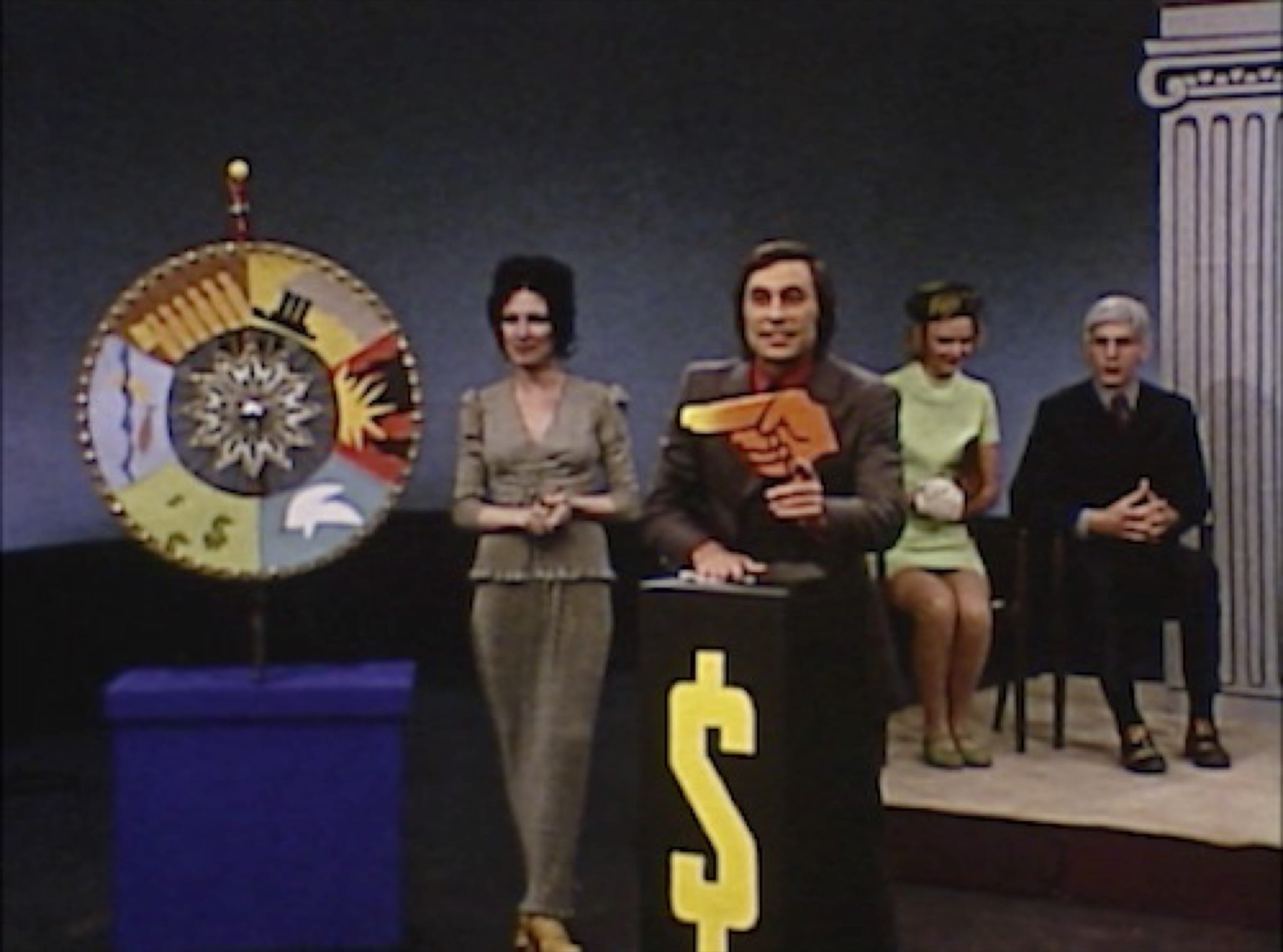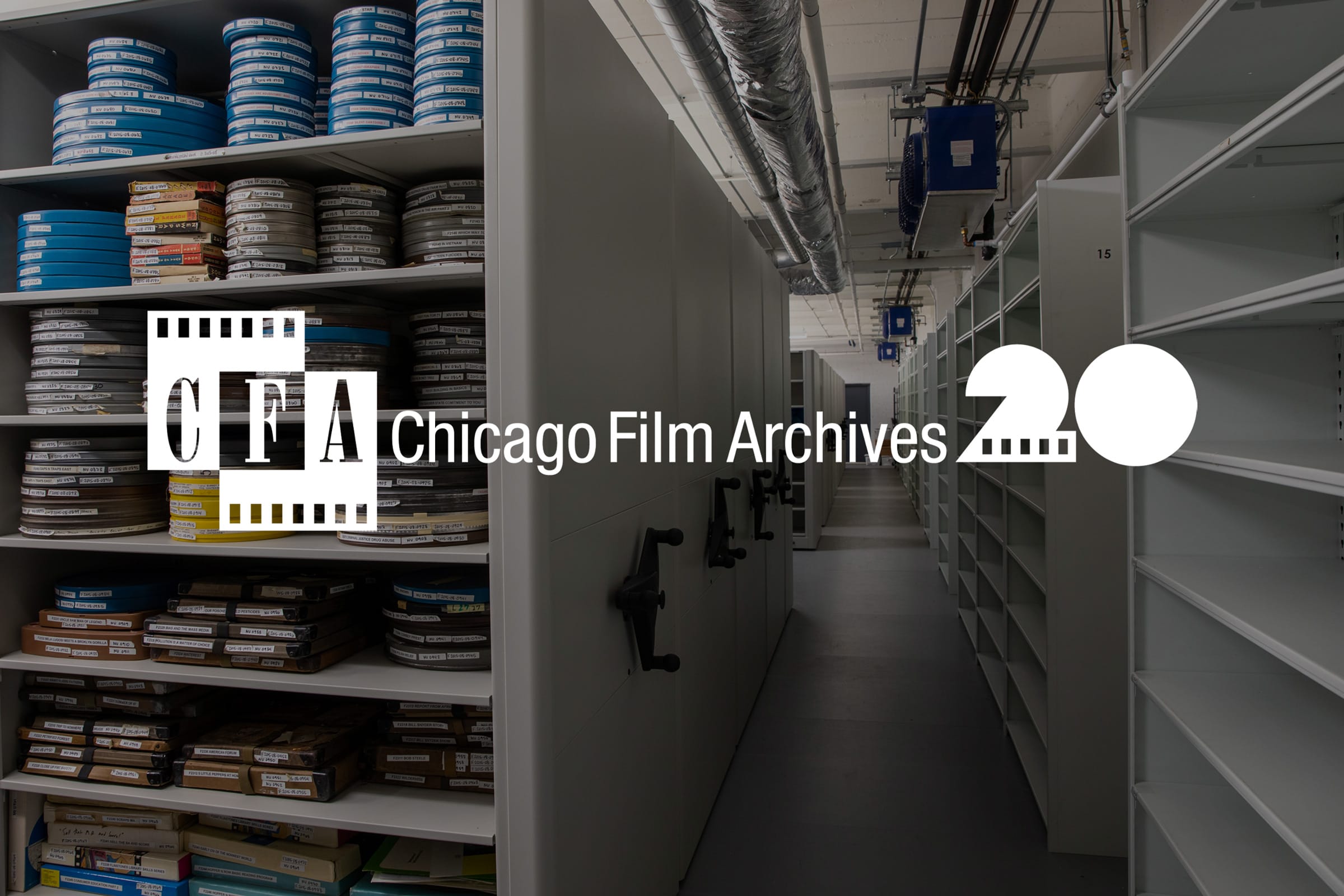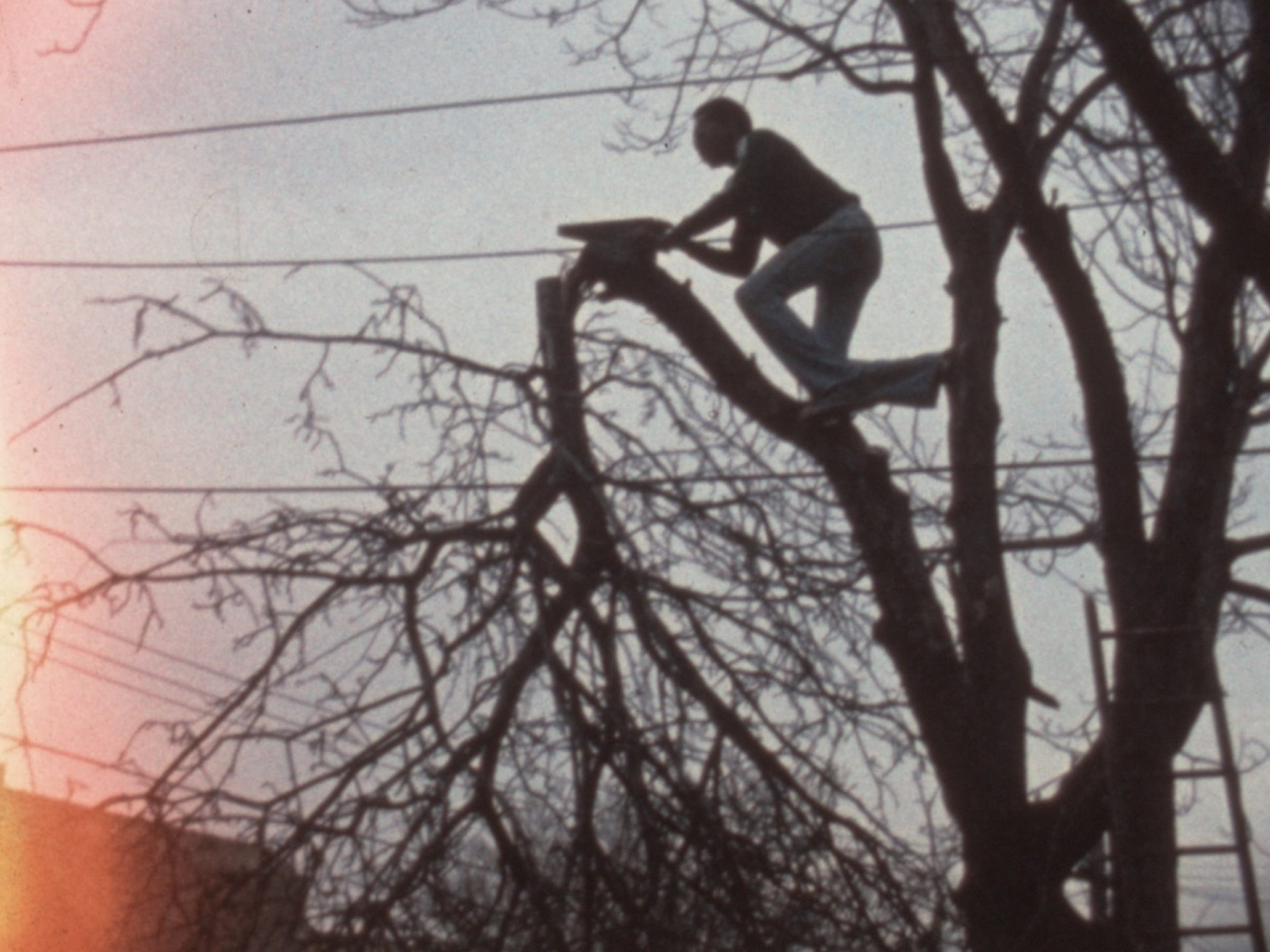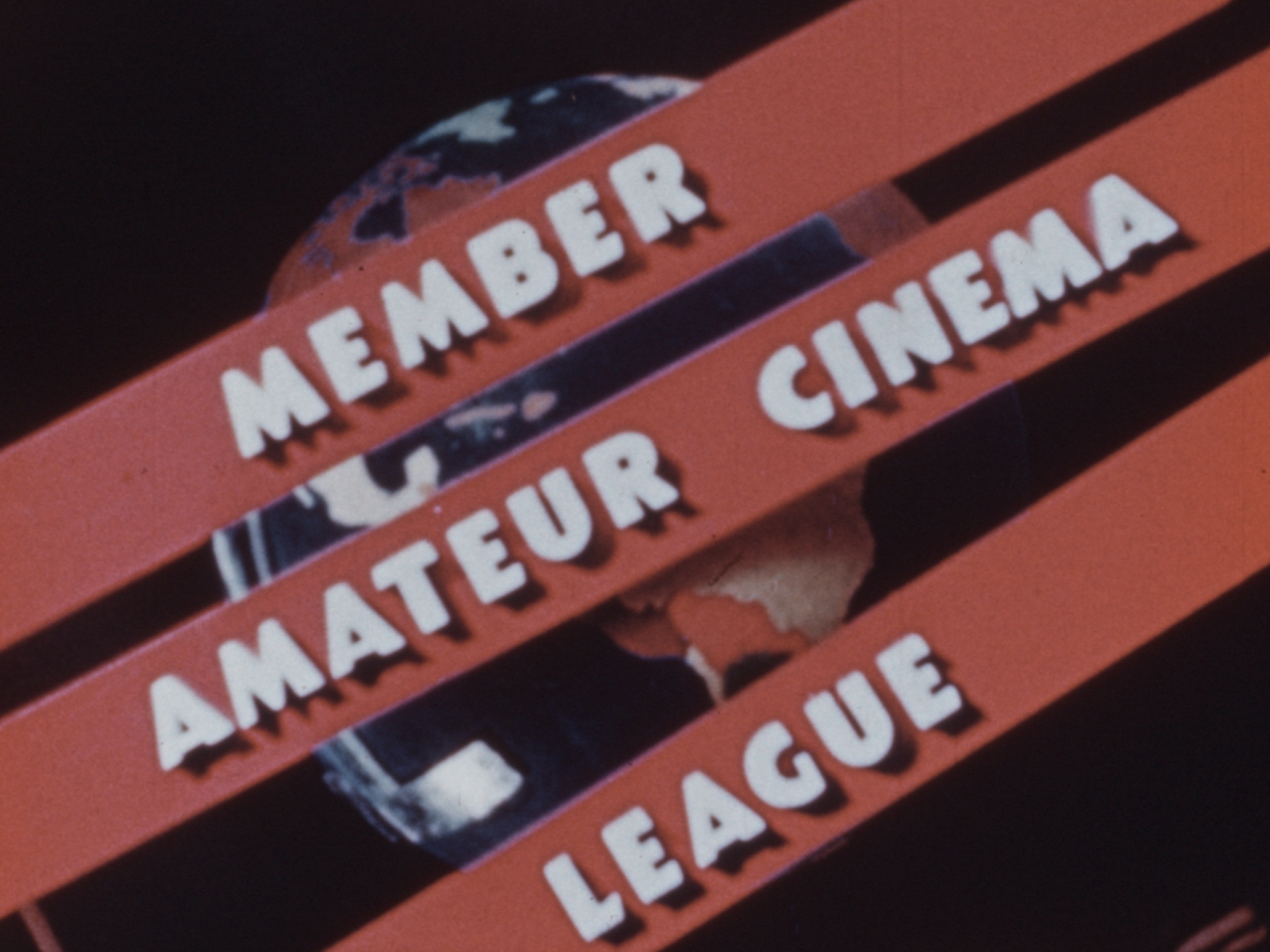
Second City’s “Pass the Buck” sketch (from l-r: Eugenie Ross-Leming, Jim Fisher, Ann Ryerson, Harold Ramis)
Over the next six weeks, CFA will present newly digtized episodes of Earthkeeping– a series produced in the early 1970s for WTTW that explores environmental, ecological and sociological issues. In presenting this series, we hope to reintroduce DeWitt Beall, a Chicago-based filmmaker primarily active in the 1960s and 70s. Now to episode two, “Greenbacks”:
Aside from the explicit financial cost, what is the true price of industrial production? Further, how are these costs transferred to the public?
“Greenbacks” takes us to two sites to explore these various hidden (or “external”) costs. The first stop is America’s “carpet capital,” Dalton, GA. On the one hand, the influx of new industry that moved into Dalton after the Second World War can be seen as an economic boon. However, while the new factories provided many jobs for Dalton residents, the resulting air and water pollution created long-term environmental detriments – the Conasauga River and nearby Drowning Bear Creek have become so polluted that nothing can live in their waters. Although a secondary water treatment facility was constructed in Dalton as a response, the water cannot be truly pollution-free without a more expensive method of tertiary (advanced) water treatment. The price of tertiary treatment is only more expensive in the short term – without it, Dalton’s water supply remains polluted and the treatment facility is only a token to assuage local fears of water pollution.
The St. Louis district of Soulard, surrounded by a Monsanto plant and the Anheuser-Busch brewery, is used as another example of these hidden costs. As the episode’s narrator explains, “… a one percent increase in sulfur trioxide was matched with a similar decrease in property values, so the pollution was paid for – not by the sources that produced it, but by the homeowner whose home was worth less.” Economist Robert Heilbroner illustrates how these types of hidden costs, which also include increasing health problems for local residents, are not reflected in the cost of products. Therefore, the companies can get away with charging less than what the product really costs (Heilbroner refers to the Consolidated Edison energy company in his example.)
Finding a culprit for these environmental concerns often entails much finger-pointing and blame-shifting, a process satirized in the Second City game show sketch, Pass the Buck: the regular panelists are representatives from Government (Joe Flaherty), Management (Harold Ramis), and Labor (David Rasche). These three contestants face off against one another, as well as a representative of the public (Ann Ryerson), in trying to quickly create a scapegoat for hypothetical environmental problems.
Stay tuned next Monday (March 17th) for our next episode, “Little Big Land” …







